For once, botanists are using a definition we can easily pronounce and understand – evergreen! Hence, the evergreen trees come to light!
In the plant world, it simply means that a tree or shrub doesn’t lose its foliage at the end of its growing season and remains green for more than one season.
That doesn’t mean, though, that evergreen trees are ‘only’ green. Many of them can fill the air with the sweet scent of their flowers, add seasonal bursts of colour, or enrich your edible garden haul. Think of all the wonderful citrus or olive varieties, magnificent flowering gum trees, or showstopping Camellias.
For backyard enthusiasts, gardeners, landscape designers, and urban planners, evergreens offer the enviable bonus of looking good year-round. They can be the constant focal point in an ever-changing landscape. When parks and forests start to empty and look bare at the end of autumn, evergreens will be the dots of colour sprinkled across hillsides and fields.
Often, small evergreen trees are also effective privacy screens in many backyards. And from a practical point of view, you won’t have to worry about the mess of autumn foliage on your driveway, lawn, or pool.
So let’s look at which evergreens are common in Australia and what they need to do well and look good. Read on for your ultimate guide to evergreens in Australia.
Please Note:
We’ve worked hard to provide detailed information about Australia’s most common evergreen trees and popular large shrubs. But before you have your heart set on a specific plant, it’s best to check in with your local garden centre or landscape specialist. They can advise you on which species do best in your area and how big they might grow. They will also know about new hybrids and varieties on the market.

Top 21 Evergreens – keeping Australia looking beautiful
Selecting the top 21 was not easy! There are so many beautiful plants to choose from. We made a point of including many of the unique evergreens native and endemic to Australia. What grows wild in our own big Aussie backyard is truly amazing.
We’ve also tried to give you a range of easy-care evergreens, those that attract birdlife or have absolutely stunning flowers, trees that grow in harsh coastal conditions or do better in cooler climates, shade trees, and shrubs for smaller gardens and patios.
And oh, let’s not forget the many wonderful species and varieties that have scented blooms and edible fruit or leaves – we’ve thrown in quite a few of those too. Enjoy!
So without further ado and in no particular order, we present to you our favourite 21 evergreen trees:
- Cornus capitata – Evergreen Dogwood or Himalayan Dogwood
- Laurus Nobilis – Bay Tree
- Hibiscus Tiliaceus – Coast Cottonwood or Sea Hibiscus
- Camellias
- Citrus
- Eucalypts – Gum trees
- Agonis Flexuosa – Willow Myrtle / Peppermint Myrtle
- Magnolias
- Elaeocarpus reticulatus- Blueberry Ash
- Clethra Arborea – Lily of the Valley Tree
- Callistemon – Bottlebrush
- Leptospermums – Tea Trees
- Olea – Olive Trees
- Acacias – Wattle Trees
- Cupaniopsis anacardioides – Tuckeroo
- Banksias
- Azara microphylla – Vanilla Tree / Boxleaf Azara
- Backhousia citriodora – Lemon Myrtle
- Waterhousea floribunda – Weeping Lilly Pilly
- Gordonia axillaris – Fried Egg Plant
- Brachychiton Populneus – Kurrajong

Cornus capitata – Evergreen Dogwood or Himalayan Dogwood
We are not quite sure why this one isn’t more widespread. If you are looking for a beautiful ornamental tree with a low-spreading canopy, the Evergreen Dogwood is a real treat. In the right conditions, it can grow up to 8 m in height and offers lush, dark-green foliage year around. But it’s the long flowering season and its prolific bloom that make this a real showstopper.
Where does it grow best?
This tree does best in cooler zones. In Australia, that means south of Perth and Sydney and mountain areas along the Great Dividing Range. It prefers a sheltered location, away from dry winds, and will require regular watering during the warmer months.
Why we love it:
Its flowers are divine. They start off as small, green-yellow blooms, morphe to a creamy yellow, and end in creamy pink petals. And after flowering, you’ll see strawberry-shaped dark red fruit appear. An Evergreen Dogwood is a beautiful addition to a Cottage Garden.
Good to know:
Be patient, it will take about six years before you will see the Evergreen Dogwood in bloom. But it’s definitely worth the wait.

Laurus Nobilis – Bay Tree
Did you know that bay leaves are used in cooking more often than any other herb? So if you have a spare spot in your garden or even a free pot on your balcony, a bay tree is a pretty hardy and very handsome plant to have near. And although bay trees could easily reach 6 – 8 metres in height, they are most often kept pruned as a shrub. This evergreen will also deliver
small yellow flowers through October and November, which will eventually turn into purply black berries.
Where does it grow best?
Bay trees are pretty forgiving. Pruning won’t bother them at all. They can grow in poor soil and are quite drought resistant once they mature. That said, they prefer warm to temperate climates or sheltered spots in cooler areas and struggle in humid, sub-tropical environments.
Why we love it:
It’s pretty, easy to grow, and really versatile. Use its young shoots to make your very own laurel wreath for the next toga party, grow it in your herb garden, train it into a hedge, or prune and shape it into a topiary tree.
Good to know:
In need of a housewarming present? You can propagate a bay tree relatively easily in late summer and early autumn. Take a leafy, 10 cm semi-hardwood cutting, remove the lower leaves, dip that end into a rooting gel, and then gently plant it in a good potting mix. Make sure to keep the soil moist and warm until roots are established.
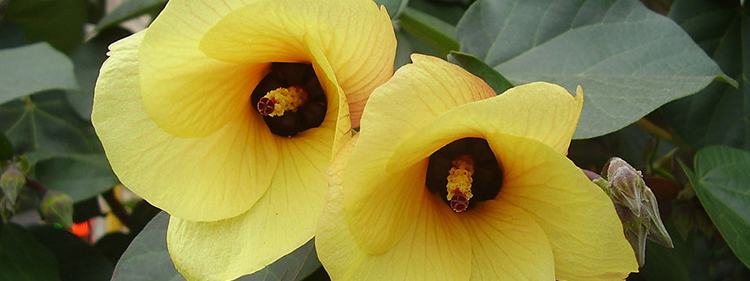
Hibiscus Tiliaceus – Coast Cottonwood or Sea Hibiscus
Native to coastal areas all over the Pacific, the Sea Hibiscus is an especially familiar sight on Australia’s East Coast – it feels very much at home on the banks of tidal rivers and the edges of a swamp and rainforests. It’s an evergreen that can grow up to 8 metres in height and 4 metres in width.
Where does it grow best?
The Cottonwood does best in tropical and subtropical climates but equally feels at home in a cool temperate or Mediterranean climate. It is an excellent plant for a coastal garden and can also be potted. Easy to look after, it will do well in a sunny spot with light shade and well-draining soil.
Why we love it:
Who needs to go on holiday to far-flung places if you have a Hibiscus to bring those exotic vibes to your garden? It is a beautiful flowering plant. You will have attractive large yellow flowers with crimson centres right through summer. Its flowers are also edible. Try dipping them in batter and frying them – absolutely delicious!
Good to know:
Coast Cottonwoods make for excellent windbreakers. They can handle those coastal, salt-laden winds!
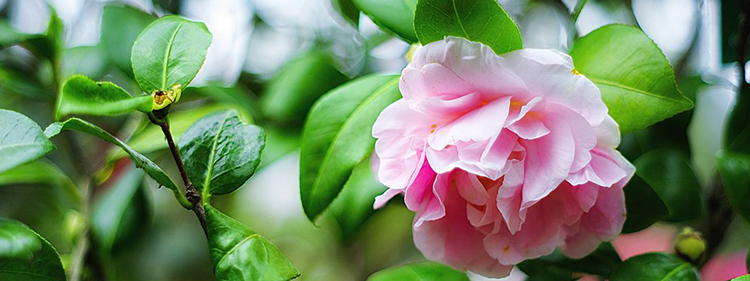
Camellias
Camellias are perhaps best known as a bush sporting bright white or pink flowers through winter and early spring. But give them space – and a lot of time – and you’ll have a tree-sized evergreen in your garden. Their dense foliage of small and shiny leaves and their slow growth make them excellent hedging plants. In addition, they are very easy to prune. In Australia, the Camellia sasanqua and the Camellia japonica are said to be the most popular species.
Where do they grow best?
Ornamental Camellias are not fussy and can be grown almost anywhere in Australia. They can handle a light frost but will need protection from the harsh midday sun and hot, drying winds.
Why we love them:
Not only will you get abundant blooms throughout the colder months when most other plants are dormant, but you can also get wonderfully scented varieties. Check your garden centre for Camellia sasanqua Apple Blossom, Camellia sasanqua Plantation Pink, or Camellia X Lutchuensis Cinnamon Cindy, for example.
Good to know:
We mentioned it before; you will have to be patient! Most Camellia varieties are slow growing, and they may take years to reach a density and height that offers privacy. But, on the other hand, the slow growth makes these plants pretty easy to care for when it comes to pruning!
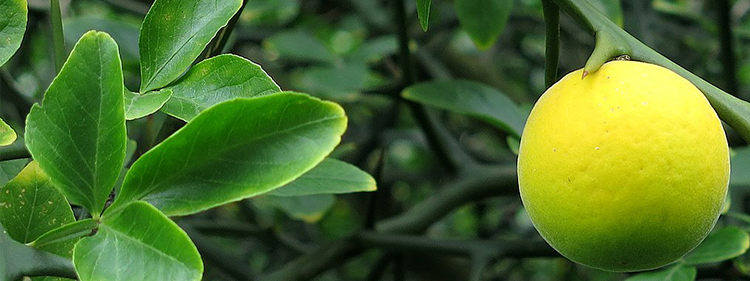
Citrus
Citrus trees are the perfect example of having your cake and eating it too! They are not just gorgeous greenery; they produce incredibly fragrant flowers followed by yummy fruit. They grow well almost anywhere in Australia. Many of them can be potted or espaliered, all of them make lovely specimen trees, and some also come in dwarf varieties.
Read on to learn more about Australia’s favourite top citrus varieties, how to grow them and what to look out for.
- Tahitian Lime
- Kaffir Lime
- Meyer Lemon
- Eureka Lemon
- Lisbon Lemon
- Washington Naval Orange
- Valencia Orange
- Blood Orange
- Mandarin
- Kumquat
- Ruby Grapefruit
- Tangelo
- Clementine
Why we love them:
What’s there not to love? There’s nothing quite like a zesty, juicy orange snack or a glass of freshly squeezed OJ for breakfast. Without citrus fruit, there’d be no lemon meringue pies, Margaritas or G&Ts, no marmalade or lime cordial!
Good to know:
Although most citrus are pretty hardy, they tend to be more susceptible to some diseases and bugs. One way to avoid introducing overseas diseases – such as Xylella – into your garden is to buy a plant that has been propagated and grown in Australia by a reputable nursery.

Eucalyptus – Gum trees
Gum trees belong to the Australian landscape, like billy tea to a campfire. Did you know there are almost 800 species, almost all of them native to Australia? That makes it tricky to summarise their care, size and positioning. Instead, here are our favourites:
River Red Gum = Eucalyptus camaldulensis
Lemon-scented Gum – Corymbia Citriodora
Red flowering Gum – Corymbia ficifolia
Pink flowering Gum ‘Precious’ – Corymbia ficifolia ‘Precious’
Orange Flowering Gum = Corymbia ficifolia ‘Wild Sunset’
Compact spotted Gum – Corymbia maculata ‘ST1’ Lowanna
snow Gum – Eucalyptus pauciflora
Water Gum – Tristaniopsis laurina (flowering yellow)
Why we love them:
“The gum tree is Australian as Aussie as can be
And there’s no more Australian than the eucalyptus tree”
These first lines of the Francis Duggan poem say it all.
Good to know:
When it comes to choosing a tree that is right for your garden, you’ll have some lovely colourful and even scented options. But it’s best to check locally which gum tree does well in your region and what size it might grow too! So instead of gardening tips, we’ll leave you with some gum tree facts.

Agonis Flexuosa – Willow Myrtle / Peppermint Myrtle
This small genus native to Australia’s southwestern coast is a graceful dame with long narrow leaves and weeping foliage. It makes for a wonderful shade tree. Most agonis species are cultivated to some extent and more widely grown as smaller trees or even shrub-sized.
Where does it grow best?
Some species we commonly see in Perth and the southern coastal regions of Western Australia, are now more widely available and grow in a variety of soils and climates.
Why we love it:
It’s the peppermint! When crushed, the leaves of the agonis flexuosa will give off a beautiful peppermint scent.
We’d also like to give a shout-out to the Burgundy Willow Myrtle (Agonis flexuosa ‘Burgundy’) with its absolutely gorgeous burgundy-coloured foliage. And another special mention should go to ‘Agonis flexuosa ‘Lemon and Lime’. This is generally a more compact tree with absolutely striking foliage in shades of lime-green and lemon. Landscapers and gardeners covet both for their colour contrast.
Good to know:
The indigenous Noongar peoples used the plant leaves of the Peppermint Myrtle as an antiseptic.
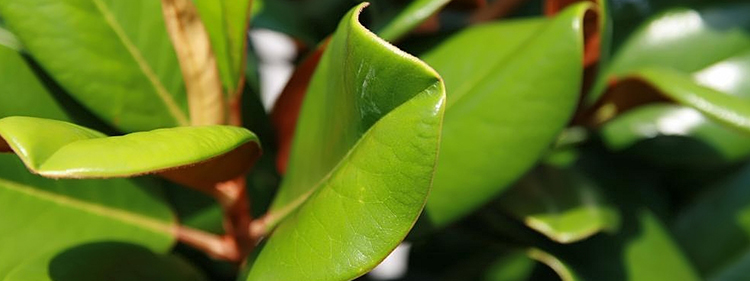
Magnolias
Not all Magnolias are evergreens. All of them are, however, the most magnificent trees. Everything about them is large and bold, and eye-catching. Their stunning blooms herald the arrival of spring; some new varieties are now scented. Their large, glossy leaves also make them fantastic screening trees and hedges.
Where do they grow best?
The evergreen varieties are pretty hardy across various climates. However, they generally prefer rich, slightly acidic soil. Here are some excellent tips for choosing a Magnolia for the right spot and caring for it. But we recommend checking in with your local garden centre or a landscaper to ensure you get the right plant for your garden.
Why we love them:
Did you know that most Magnolia flowers are edible? Have you ever tried pickled Magnolia petals? Literature suggests that none of the Magnolia blooms are toxic. However, they do have different tastes. As a rule of thumb, go for the younger petals; older flowers tend to become bitter.
Good to know:
There are many stunning varieties. Here are some of our faves, chosen for their scent and blooms but also giving you a variety of sizes:
- Magnolia Grandiflora
- Portwine Magnolia – Michelia figo
- Magnolia Grandiflora Teddy Bear
- Magnolia Grandiflora Little Gem
- Magnolia Grandiflora sweet ‘n’ neat
- Magnolia Grandiflora Kay Parris
Make sure you choose the ones that will do well in your climate and location!
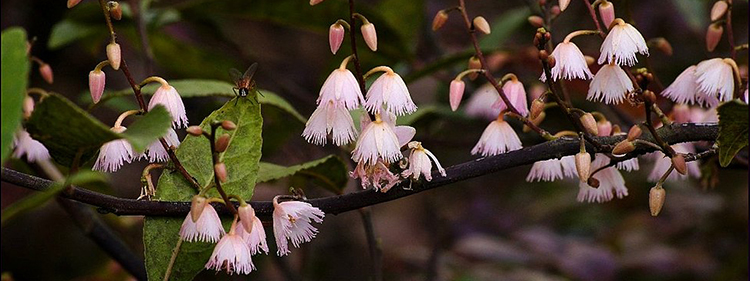
Elaeocarpus reticulatus – Blueberry Ash
If you need a good-looking, slim evergreen that gives you an ever-changing display of colour year round – the Blueberry Ash is a great choice.
A native to the Australian rainforests, birds love this tree. Throughout spring and summer, it’s covered in pink and white feathery flowers, followed by blue berries in autumn and right through winter. Even its leaves put on a show, with the older leaves turning a bright red as they mature.
Where does it grow best?
Originally home in rainforests, it can be found from Queensland right down to the northern edges of Tasmania, all along the Eastern coast of Australia. It’s quite a hardy plant but does best in moist, well-drained, and fertile soil in a sunny to semi-shaded spot. You can prune it so it will work well directly in the garden, as a hedge or grown in a large pot. Blueberry Ash is also known to be resistant to pests and diseases.
Why we love it:
Birds love the Blueberry Ash. The tree is known for attracting Regent Bowerbirds, Crimson Rosellas, Wonga and White Headed Pigeons, and Figbirds.
Good to know:
We can see why it’s called Blueberry Ash, but interestingly, its flowers actually have a fragrance, similar to anis seed.

Clethra Arborea – Lily of the Valley Tree
Hailing from Madeira, a Portuguese Island off the West Coast of Africa, the Lily of the Valley is a compact evergreen and can be grown as a large shrub or small tree. Its dark, evergreen leaves are up to 15 cm long, and it produces masses of highly fragrant cup-shaped white flowers throughout summer and autumn.
Where does it grow best?
A mature Clethra Arborea can reach a size of about 7m x 4 m, which makes it the perfect plant for a small garden. It does well in moist and well-draining soil, free of lime, and in a sunny to semi-shade position. It is frost-tender and will do better in mild to warmer climates.
Why we love it:
This is quite a spectacular plant and pairs really well with Azaleas, for example. Even better, apart from the occasional prune, it pretty much takes care of itself.
Good to know:
Even though it is native to the faraway Island of Madeira, it is typically quite readily available in garden centres.
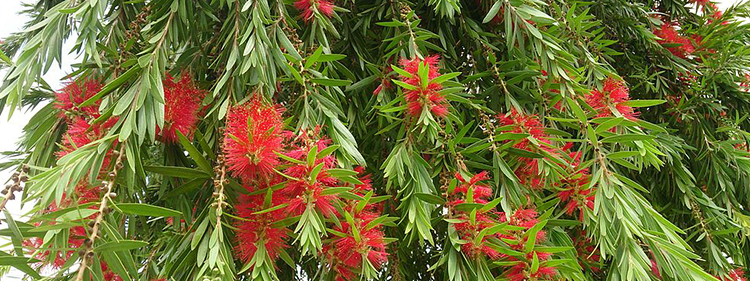
Callistemon – Bottlebrush
The Callistemon is another tree belonging to the Myrtle family. Of the 30 known Bottlebrush trees, all but four are endemic to Australia. The Callistemon is another trouper of a tree, super hardy, and extremely low maintenance. Best of all, these trees produce masses of the most beautiful red flowers and are typically covered in red from spring right through to autumn.
Where does it grow best?
Although it is incredibly hardy and can tolerate frosts, the Bottlebrush will need a warm spot in cooler areas or altitudes. Other than that, it can be grown anywhere but in the driest areas of Australia – it prefers moist to wet soil. Callistemon can grow up to 8 m in height.
Why we love it:
There are two things we love about the Bottlebrush: It has a Christmas vibe with its bright red flowers and lush green foliage (although there are also pink and purple varieties available) and it’s another tree that attracts the birds to your garden.
Good to know:
Some of our favourite varieties are:
- Callistemon citrinus
- ‘Candy Pink’
- C. Harkness’
- ‘Great Balls of Fire’
- ‘Little John’
- ‘Purple Cloud’
- ‘Hot Pink’
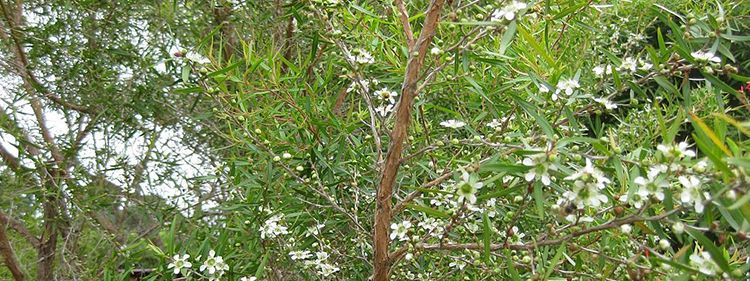
Leptospermums – Tea Trees
Another genus of shrubs and small trees which belongs to the Myrtle Family and is primarily endemic to Australia! Leptospermum species most commonly grow naturally in southern Australia, typically in nutrient-poor soil. The Leptospermum scoparium is perhaps the most widely spread native shrub and can be found from Tasmania right through to NSW.
Where do they grow best?
Growing conditions largely depend on the variety you choose. Still, tea trees generally make for a lovely and easy-care garden and hedging plant with their slender leaves and profusion of flowers. Many will do well in water-wise gardens.
Here are some of our fave varieties:
- Leptospermum liversidgei Mozzie Blocker
- Leptospermum petersonii – lemon scented tea tree
- Leptospermum rubrum nana
- Leptospermum Pacific Beauty
- Leptospermum Pink Cascade
Why we love them:
Because together with bees, the nectar from the tea tree flower produces the most delicious Manuka and Jelly bush honey, of course!
Good to know:
Tea trees can be excellent insect repellants because many have a fresh lemon scent.

Olea – Olive Trees
Olives may be a bit of an acquired taste, but olive oil remains the number one oil in kitchens around the globe. In fact, “Australians are one of the biggest consumers of olive oil outside of the Mediterranean, consuming almost two litres per person, per year”, according to an ABC News report. So planting a couple of these evergreens not only adds Mediterranean charm to a garden, but with a bit of luck and a green thumb, you’ll also be able to harvest your own olives.
Where do they grow best?
There are so many varieties available in Australia. Choosing the right one really comes down to which ones you prefer and which ones perform well in your climate. But generally, they need well-draining soil and do well in dry and hot summers and cool winters. They don’t mind coastal salt-laden winds and can tolerate a medium frost.
Why we love them?
Apart from the obvious – the potential haul of homegrown olives, these evergreens can also add an elegant contrast to a garden with their slender, grey-green leaves.
Good to know:
A wide variety of olive trees is relatively readily available in Australia. The Olive Nursery provides excellent information on each variety you want to do your own olive research.
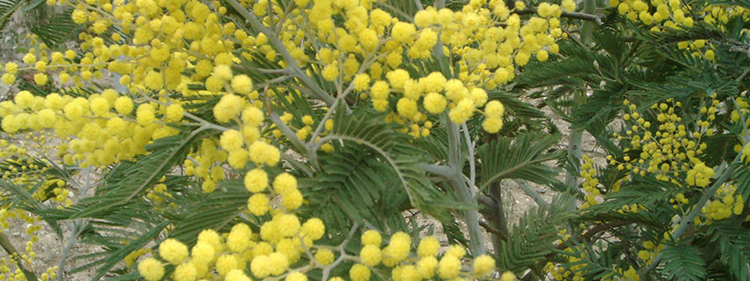
Acacias – Wattle Trees
Well, this list wouldn’t be complete without the most Aussie of all Australian plants – the Wattle Tree. And whilst the most commonly known – and celebrated one – is the Golden Wattle, there are said to be over 1200 Acacia species in Australia.
Where do they grow best?
All Wattles seem to be very hardy and will not need a lot of looking after. They can tolerate varying temperatures and poor soil, but they need to be protected from heavy frosts and don’t really like poorly draining soil.
Why we love them:
There are good reasons why the flower of the Golden Wattle is Australia’s national flower, and its bright gold and yellow are our national colours. Check out all the many wonderful qualities of this national treasure.
Good to know:
Wattles come in many shapes and sizes. Some varieties are fantastic ground covers, and others, such as the Golden Wattle, can grow up to 10 m tall. Wattles are typically fast-growing trees, making them a good choice for hedging and wind-breakers.
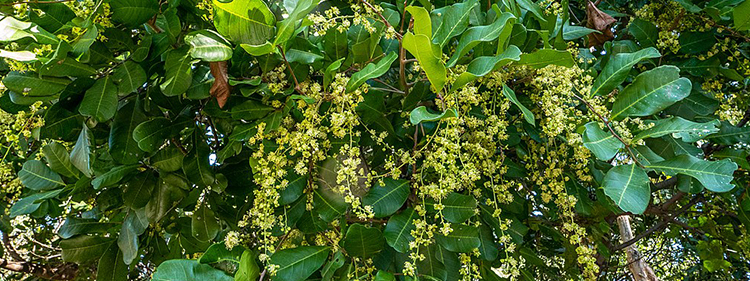
Cupaniopsis anacardioides – Tuckeroo
This is another very attractive Australian native tree – there are so many of them! The Tuckeroo is often seen in tree-lined streets as its large glossy leaves and spreading crown makes it a good shade tree. It will be covered in lovely cream flowers in autumn, followed by bright orange decorative fruit and, eventually, seeds.
Where does it grow best?
Tuckeroos prefer sunny to part-shade positions – their natural habitat is the northern NSW and Queensland rainforests. It needs free draining and rich soil, so regular watering and lots of mulch is a must, especially until the plant is established. Over time, it can reach a height of 5 – 8 metres.
Why we love it:
Because its ripe fruit and seeds attract a variety of birds, such as the olive-backed Oriole, the Pied Currawong, or the Australasian figbird.
Good to know:
The Tuckeroo’s root system is considered non-invasive, making it an excellent plant in streetscapes and garden borders. A Tuckeroo can live up to 60 years!
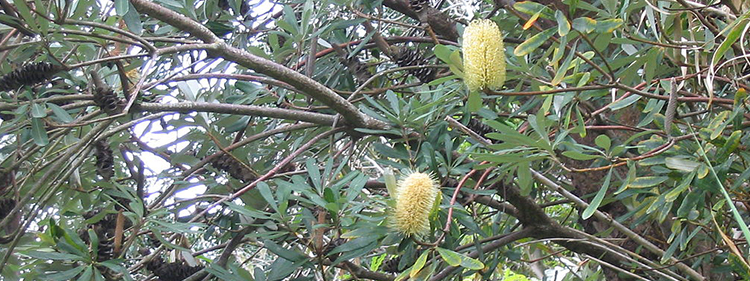
Banksias
Named after Sir Joseph Banks, there are over 170 Banksia species, all but one native to Australia. And although most of us think of Banksia as a flower, these evergreens can grow into sizable shrubs and even trees up to 25 metres tall. They certainly all have absolutely stunning flower heads.
Where do they grow best?
Most Banksisas can be found naturally pretty much all around Australia’s coastline. Unfortunately, several are currently listed as rare or threatened.
In the garden, Banksias grow best in a sunny position and well-drained soil, and they like a low phosphorus fertiliser. However, some species native to Western Australia do not cope well with high humidity or heavy rainfall that can occur in other parts of the country and will easily suffer from root rot. Make sure you do your research as to which plant will be best suited for your climate.
Some of our faves are:
- Banksia integrifolia var. integrifolia – Coast Banksia
- Banksia ‘Giant Candles’
- Banksia aemula – Wallum Banksia
- Banksia oblongifolia – fern leaf banksia
- Banksia serrata – saw banksia
Why we love them:
The Banksias’ spectacular flowerheads, producing nectar and seeds, are magnets for many native birds, such as the Wattle Bird and Cockatoos, as well as small native animals.
Banksias also look amazing in dried floral arrangements!
Good to know:
The wood of the Banksia can be used for cabinet panelling or smaller wooden items. However, it’s the Banksia cones that are sought after worldwide to then make ornamental pieces from them.
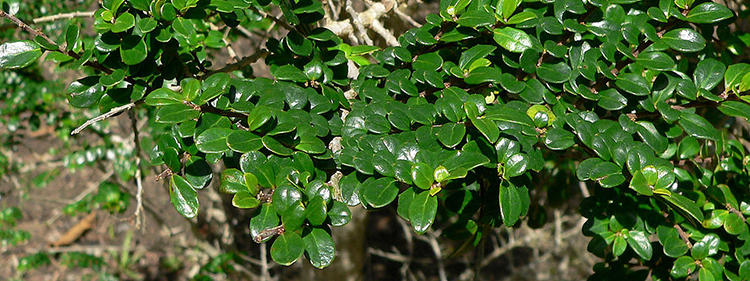
Azara microphylla – Vanilla Tree / Boxleaf Azara
Well, the name says it all. Every spring, this graceful evergreen will shine bright with masses of yellow flower pom poms bringing with them a rich vanilla fragrance. Native to South America, its foliage is an intense green and tends to grow quite upright. That makes it a lovely evergreen to use in hedging or in places where space is at a premium.
Where does it grow best?
It doesn’t like dry sites, so keep the soil moist and rich in organic matter. Other than that, give it the occasional pruning, and your Vanilla Tree will be happy. This evergreen can grow up to 8 m tall.
Why we love it:
They had us at vanilla. Imagine a spring evening on your patio — one of those first warm evenings after winter hibernation. You might sit there with a glass of wine, perhaps a small cheese platter, or simply a cuppa AND the sweet aroma of vanilla wafting through the air.
Good to know:
Because they don’t need much summer sun, Vanilla Trees are a good option for courtyards and shaded garden corners that are harder to keep green.
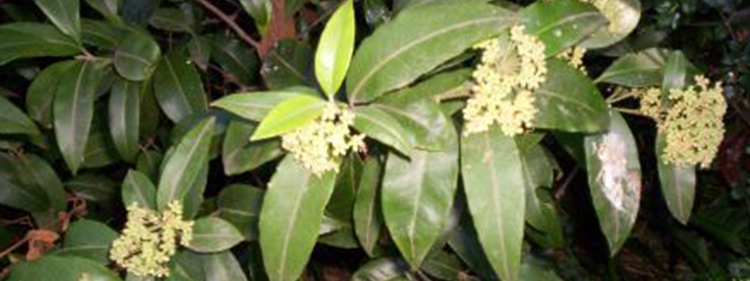
Backhousia citriodora – Lemon Myrtle
Continuing with the perfumed garden theme, the Lemon Myrtle is another evergreen endemic to the subtropical rainforests of parts of Queensland. It’s a rather lovely plant with hard-to-miss clusters of white flowers. Its aromatic foliage releases a lemon scent when crushed or after rainfall. Cultivated, it can grow up to 5 metres tall.
Where does it grow best?
Not surprisingly, the Lemon Myrtle likes good, rich soil, mulch, and warm conditions but needs dappled shade in hot and dry climates. More mature trees tend to be frost tolerant, but younger ones will need protection. It can be grown in a pot, but you’ll have to make sure you keep its soil moist.
Why we love it:
The Lemon Myrtle is not just a pretty face; it’s a true superpower. This evergreen has numerous culinary and antimicrobial uses! It’s known as an essential bushfood flavour and the ‘Queen of lemon herbs’. Lemon Myrtle oil is a popular ingredient for cleaning products but also lotions, shampoo, and soaps.
Goonud to know:
This one is perhaps more of a fun fact: Legend has it that Lemon Myrtle completely sold out in London back in 2010 after British celebrity chef Jamie Oliver mentioned it in one of his cooking shows on TV.
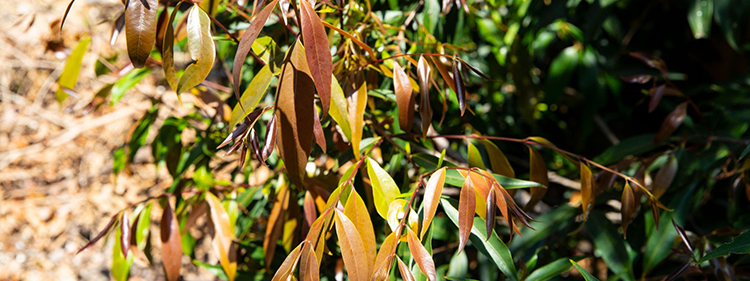
Waterhousea floribunda – Weeping Lilly Pilly
The Weeping Lilly Pilly is the it-girl of the Australian garden world at the moment – a very popular evergreen. And rightly so. It’s a lovely ornamental tree with weeping foliage that starts out a light green with a pale pink hue and morphs into dark green, lance-shaped leaves. From spring to mid-summer, it bears fragrant fluffy flowers that are followed by pale pink berries.
Where does it grow best?
Originating from the Eastern Australian rainforests, it is frost sensitive and needs a position in full sun or part shade. Water it well and feed it with a slow release native fertilizer in spring and you will enjoy a dense green hedge or beautiful shade tree that can grow up to 10 metres tall.
Why we love it:
It’s one of the best-looking privacy screens and effective noise barriers we know! It’s relatively fast-growing, looks amazing year-round with its ever-changing foliage, and doesn’t really need much care – just the way we like it.
Good to know:
The Weeping Lilly Pilly – as are many trees in the Myrtle family – can be susceptible to myrtle rust. It’s well worth understanding what to look out for and what you can do to prevent it.

Gordonia axillaris – Fried Egg Plant
Of course, it is the large white flowers with a yellow center that have given this bold evergreen its name. How could we not include the Fried Egg plant?
However, we found out that its common name makes it quite hard to research. Google Fried Egg Plant and the search engine spits out a raft of eggplant recipes!
Where does it do well?
The Gordonia is quite a small tree (3 – 5 metres tall) and can also be used as a screening plant. That makes it a favourite street tree or ornamental garden hedge in urban areas such as Perth, Melbourne, Sydney, or Adelaide. It needs a sunny or partly shaded position in well-drained soil and plenty of water. If you have a young plant, make sure you protect it from frosts.
Why we love it:
For its large sunny side up flowers. They are easily 10 cm wide and bloom throughout autumn and winter, a time when many other trees and shrubs look decidedly drab.
Good to know:
The spent flowers do, of course, drop off and fall on the ground. That might be a hassle or hazard to some.

Brachychiton Populneus – Kurrajong Bottle Tree
Another spring flowering evergreen ushering in the warmer months. You will enjoy masses of divine, bell-shaped flowers in creamy white and pink followed by clusters of seed pots appearing in summer. It’s considered a fast-growing, relatively slim tree and can reach heights of up to 14 metres.
Where does it do well?
The Kurrajong is native to Eastern Australia from its drier foothills and plains to wet coastal areas. It’s drought tolerant and needs little watering which makes this evergreen a waterwise option. The Kurrajong does best in well-draining soil and full sun.
Why we love it:
For its lovely bell-shaped flowers for one. But also for the fact that its seeds are edible, either cooked or roasted. Roasted seeds can also be ground into flour.
Good to know:
These days, the Kurrajong is commonly used as a street tree as well as a screening tree.
Voila, 22 evergreens, big or small, native or from far-flung places, visually bold or scented – or both. We hope we’ve given you some food for thought with our choice of evergreens.
You might say but where are the palm trees, the pines, or the many amazing rhododendrons available on the market? And you are absolutely right, there are a few more that we’ve not mentioned in this article.
However, we hope we’ve given you a good selection of species, with a few uniquely Aussie evergreens thrown in the mix. Because the plant world is in constant change. Every year, growers will bring new varieties on the market that have been tweaked to perhaps be more compact, hardier, and have different coloured blooms.

Frequently asked questions
Although the team at Flowers across Sydney specialises in fresh flower bouquets, we still get a fair few plant questions. Especially relating to plants that are native to Australia. And with those, we can help! Many of the lovely bouquets we put together for you are made with blooms from the very evergreen trees and shrubs we were telling you about.
So here are the most popular questions – with brief answers from the team!
Are there native evergreen trees in Australia?
There sure are! As it turns out, most of the native trees in Australia are evergreens – some of them you can’t find anywhere else in the world growing wild!
Native trees are also wonderful to attract birds and some wildlife, and many of them will be able to withstand the harsher climate conditions.
What is the prettiest evergreen tree?
That’s a tricky one. That’s like asking what is the best ice cream flavour. Luckily, it’s different for everyone – otherwise, we would all have the same plants in our garden and stick with vanilla ice cream for our entire life!
We did a quick survey within the team, and these two evergreens have come out on top:
Hibiscus Tiliaceus – Coast Cottonwood or Sea Hibiscus. This beautiful ornamental tree has the most startling blooms, that change colour as they mature and eventually turn into (ornamental fruit). Its shape also makes it a perfect shade tree to sit under. Very romantic!
Magnolias. In particular the Magnolia Grandiflora Little Gem. It’s a more compact variety making it perfect for smaller spaces, patios, and balconies. But it still comes with the most stunning, beautifully scented white flowers.
What are the fastest-growing evergreen trees in Australia?
There are two that stand out in particular. The Flowering Gum Tree (check out the Eucalypts – Gum trees section) and the Waterhausea floribunda – Weeping Lilly Pilly. It depends a bit on what you are needing a fast-growing tree for. Gum trees tend to grow rather large, whereas you can easily prune the Weeping Lilly Pilly into an effective hedge for privacy and noise control.
What’s the best small evergreen tree for balconies and patios?
There was a clear winner in this category: Citrus! Many lemon, lime, and orange tree varieties now come as dwarf plants so you can even pop them in a pot. Their flowers are perfumed and of course, you’ll harvest your own delicious, juicy fruit! We also like the happy pops of colour citrus trees add to a garden, with their bright orange and yellow fruit.
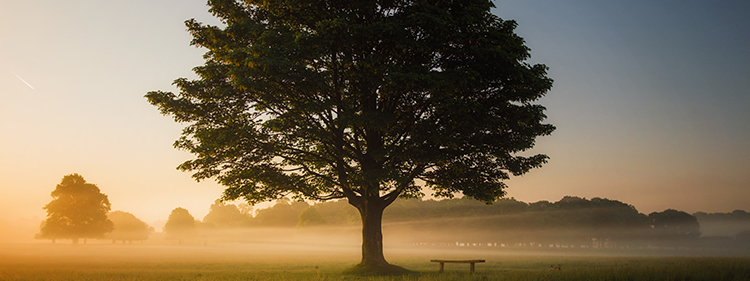
Are you ready to get gardening?
Although quite a few of the plants listed here can be grown from seed, we tend to opt for a more mature plant – and healthy trees and shrubs can be a bit of an investment. You’ll want to make sure you’ve chosen an evergreen that will do well in the climate zone you’re in, and won’t be difficult – and expensive – to keep alive. So we hope that this selection of evergreen trees might give you some ideas – and confidence in your green thumb – without feeling overwhelmed by the sheer number of amazing green options available. In any case, have a chat to your local garden experts, ask questions, and shop around.
Are you ready to tackle that backyard, spruce up the patio or find the perfect lush green privacy screen along the driveway?
What is your favourite evergreen? What plants have you paired it with? What’s your top garden design tip? Please share your photos and gardening ideas – we’d love to hear from you. Till then, happy gardening!

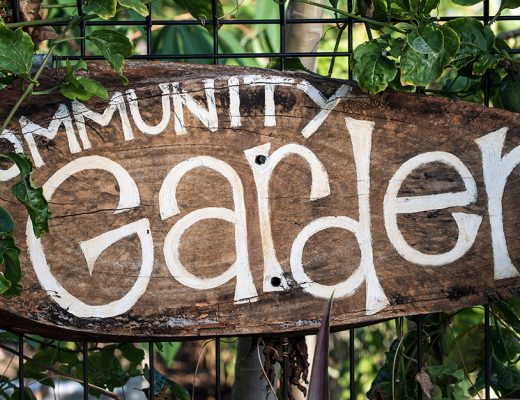


No Comments